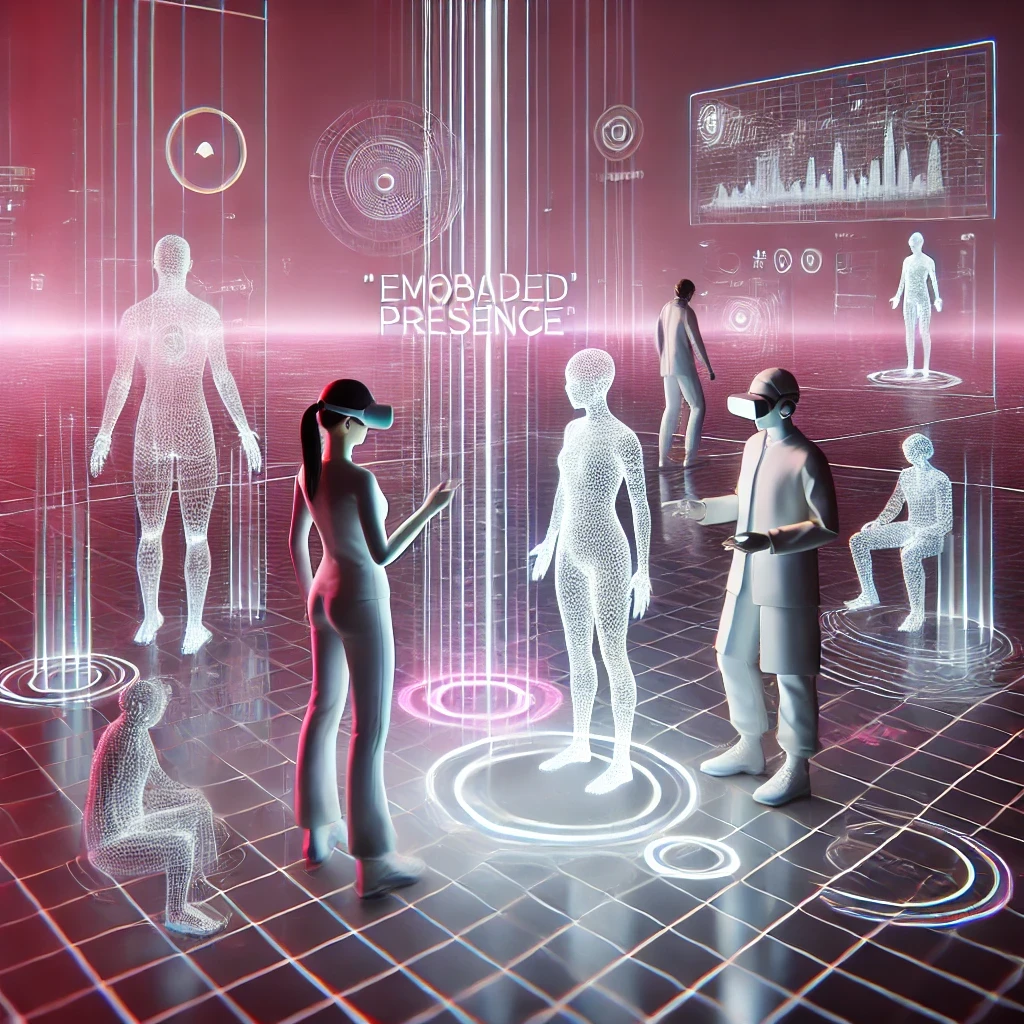Article
Virtual Reality and Human Behavior
Sep 25, 2024

Embodied Presence: Redefining Social Interaction
Virtual Reality (VR) is transforming how we experience presence and social interaction, moving beyond screens to fully immersive environments. One of the most significant impacts VR has on human behavior is through what is called “embodied presence.” Unlike traditional digital interactions where communication is confined to text, voice, or video, VR places users inside 3D environments, allowing them to interact with others through avatars that mimic real-world movements. This sense of physical embodiment leads to stronger feelings of connection and immersion.
As highlighted in research, social VR platforms, such as VRChat and AltspaceVR, allow users to “be” somewhere, rather than just observe. The experience is not just about seeing another person’s avatar; it’s about feeling their presence in the shared space, often mimicking real-world social dynamics. Jaron Lanier, a VR pioneer, notes that the “visceral realness of human presence within an avatar” is one of the most compelling sensations in VR, fundamentally altering how we perceive others and ourselves.
This embodied presence has powerful effects on how we build relationships and trust in virtual spaces. VR allows for real-time eye contact, body language, and proximity, which are crucial for developing rapport. However, the immersive nature of VR can also blur the lines between real and virtual, with users reporting emotional responses similar to those in physical reality. For example, participants in VR experiences often forget they are in a simulation, reacting instinctively to threats or comforts as if they were real.
Cognitive Shifts: Learning and Memory in Virtual Spaces
VR is not just reshaping how we interact socially but also how we think and learn. The concept of “embodied cognition” is gaining traction as researchers explore how being in a VR environment affects learning and memory. Unlike 2D environments where learning is abstract and removed from physical experience, VR allows users to engage with information in a spatial, hands-on way, making learning more intuitive and immersive. In VR, the body becomes an active participant in the learning process, helping users internalize complex concepts through interaction with 3D models and environments.
For example, in virtual classrooms or training environments, students can manipulate objects, explore historical sites, or conduct scientific experiments in ways that would be impossible in the physical world. This shift from passive learning to active, embodied learning enhances memory retention and understanding. Studies have shown that engaging with 3D data objects in VR environments allows users to develop a deeper understanding of complex systems by manipulating and interacting with the data in real-time.
This embodied cognition doesn’t just affect academic or professional learning; it extends to everyday problem-solving and creativity. VR users often report feeling more creative and willing to take risks in virtual environments, as the immersive nature of the experience helps break down mental barriers that exist in the real world. The freedom to experiment in a safe, virtual space encourages users to explore new ways of thinking and solving problems, which can lead to cognitive shifts that translate back into their real-world behavior.
Emotional Impact and Psychological Well-Being
The emotional and psychological effects of VR are profound, as the technology provides a unique space for users to experience both positive and negative emotional states. On the one hand, VR has been used to promote mental health and well-being, offering virtual spaces for therapy, meditation, and social support. For instance, VR applications that simulate calming environments or allow users to practice mindfulness in immersive settings have shown promise in reducing stress and anxiety.
However, the immersive nature of VR can also introduce challenges. Prolonged exposure to virtual environments can lead to what researchers call “reality confusion,” where users struggle to separate their experiences in VR from their real-world identities. This can manifest in “liminal moments” where the brain attempts to reconcile physical and virtual realities simultaneously, sometimes leading to disorientation or emotional discomfort. For some users, especially those who spend extended periods in social VR environments, this confusion can result in a preference for virtual interactions over real-life ones.
Another emotional aspect of VR is its potential for both positive and negative social experiences. While VR can facilitate deep, meaningful connections, it can also expose users to new forms of harassment and bullying. The embodied nature of avatars in social VR makes these interactions feel more personal and real, leading to stronger emotional reactions. The challenge for developers and users alike is to create safe, inclusive environments that protect against these negative behaviors while fostering positive social engagement.
In conclusion, VR is reshaping human behavior in profound ways, from how we interact socially to how we think, learn, and process emotions. The technology offers incredible opportunities for enhancing connection, creativity, and learning, but it also presents challenges that must be addressed to ensure that VR becomes a positive force in our lives. As we continue to explore the potential of VR, understanding its impact on human behavior will be key to unlocking its full potential in ways that benefit individuals and society as a whole.